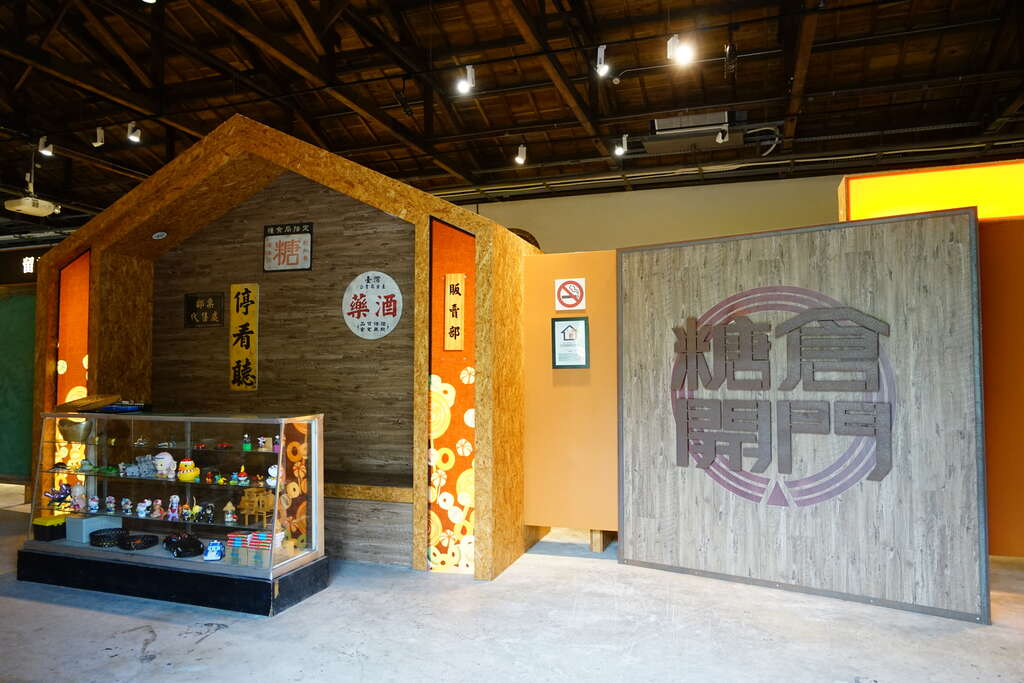Taipei Sugar Factory Cultural Park Introduction
In 1764 (the 29th year of the Qianlong Emperor), records of sugar production began in northern Changhua, Taiwan. The area near Dali Street in Wanhua was characterized by private sugar storage organizations and extensive sugarcane cultivation during the Qing Dynasty. After the establishment of the Taipei Sugar Company during the Japanese occupation, the landscape underwent significant transformation, becoming an industrial area focused on sugar manufacturing and transportation infrastructure. Surrounding residents largely relied on the sugar industry or related sectors for their livelihoods. After the end of Japanese rule, urban planning continued the concept of mixed land use from the colonial period, designating the vicinity as an industrial zone. Shortly after being taken over by Taiwan Sugar Corporation, sugar production ceased, and the site was converted for storage use. However, small to medium-sized factories in related industries such as chemicals, food processing, and paper remained prevalent, relying on the residual production capacity of the sugar industry. In the 1940s, the predecessor of China Times, "Zhengxin News," utilized the Taiwan Sugar warehouses for newsprint, attracting the clustering of the surrounding printing industry. From the 1960s to the 1970s, the convenience of railway transport drew in wholesalers of ready-made clothing. Throughout the historical development of Taipei, the area near Dali Street has consistently played a production role. In recent years, changes in the industrial environment and urban development shifting eastward have led to the gradual decline of the once-prosperous "Huishewei" community and industrial landscape. The quality of the physical environment has deteriorated due to population density and the intensification of building construction. Public facilities have been unable to service residents' daily needs, resulting in the area becoming marginalized in urban development. Residents of the Dali Street community opposed the establishment of a nursing home and advocated for a neighborhood park, preserving the Taipei Sugar Factory, the northernmost sugar production relic in Taiwan. The warehouse, a designated historic site since September 23, 2003, features brick structures, arches, trapezoidal columns, and large-span frameworks. The vision for the future includes three designated historic sugar warehouses (A, B, C) located on Dali Street in Wanhua District, covering an area of about 1.092 hectares. Apart from the historic site itself, the C1 area is currently a park and underground parking lot. After years of efforts to preserve the sugar warehouse and acquire parkland at no cost, the Cultural Affairs Bureau continues to seek central government funding for repairs. Since the opening of the Taipei Sugar Cultural Park, the three designated historic warehouses have been planned as a sugar culture exhibition hall (Sugar Warehouse A), Wanzhou Theater (Sugar Warehouse B), and spaces for private organizations (Sugar Warehouse C). The sugar culture exhibition hall operated by the bureau features a permanent exhibition titled "Opening the Sugar Warehouse," focusing on the development of the sugar industry in northern Taiwan, including collective creative workshops involving historical data collection, oral history interviews, and participatory creative workshops for artists to complete their works. Additionally, community resources are leveraged to recruit volunteers to assist with exhibition services and guided tours, establishing the park as a significant local education venue. The planned utilization of Sugar Warehouse A involves a "Opening the Sugar Warehouse" special exhibition that emphasizes the significance of preserving the sugar warehouse while introducing the historical stories of the Taipei Sugar Factory and the development trajectory of industries in the western part of the city. It will also feature a sugar art classroom available for cultural and diverse community events. The Cultural Affairs Bureau manages the site, which is open for free visits. Sugar Warehouse B is operated by the theater, offering self-organized programs and professional curation while renting space for performing arts groups to cultivate local audiences in Wanhua and collaborate with schools and community organizations to promote performing arts. Through events like the Mengjia International Dance Festival and the Wanzhou Theater Arts Residency Project, resources are linked to domestic and international platforms, showcasing a rich and diverse performing arts ecology within the Taipei Sugar Cultural Park. (Source: Taipei City Cultural Affairs Bureau)










